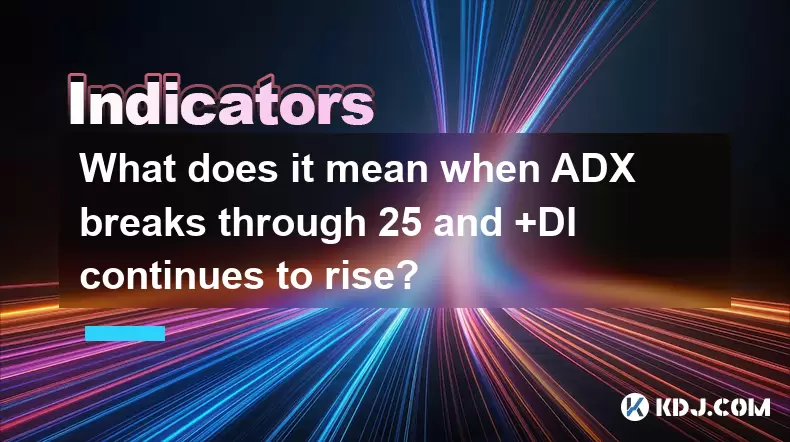-
 Bitcoin
Bitcoin $118000
0.67% -
 Ethereum
Ethereum $3750
0.71% -
 XRP
XRP $3.183
1.61% -
 Tether USDt
Tether USDt $1.000
-0.01% -
 BNB
BNB $788.1
1.21% -
 Solana
Solana $186.0
0.85% -
 USDC
USDC $0.9999
-0.02% -
 Dogecoin
Dogecoin $0.2373
1.25% -
 TRON
TRON $0.3204
1.76% -
 Cardano
Cardano $0.8266
1.85% -
 Hyperliquid
Hyperliquid $44.04
1.28% -
 Sui
Sui $4.192
5.88% -
 Stellar
Stellar $0.4399
2.63% -
 Chainlink
Chainlink $18.40
1.19% -
 Hedera
Hedera $0.2842
9.06% -
 Bitcoin Cash
Bitcoin Cash $560.5
2.46% -
 Avalanche
Avalanche $24.99
4.58% -
 Litecoin
Litecoin $114.5
1.25% -
 UNUS SED LEO
UNUS SED LEO $8.980
-0.03% -
 Shiba Inu
Shiba Inu $0.00001406
0.53% -
 Toncoin
Toncoin $3.306
4.27% -
 Ethena USDe
Ethena USDe $1.001
0.03% -
 Polkadot
Polkadot $4.169
2.37% -
 Uniswap
Uniswap $10.56
1.95% -
 Monero
Monero $322.8
1.06% -
 Dai
Dai $0.0000
0.00% -
 Bitget Token
Bitget Token $4.545
0.12% -
 Pepe
Pepe $0.00001261
1.29% -
 Aave
Aave $296.5
1.27% -
 Cronos
Cronos $0.1379
5.90%
Is the volume-price divergence of the time-sharing chart useful? How to judge the trend at the daily level?
Volume-price divergence on time-sharing charts and trend analysis on daily charts are crucial for effective cryptocurrency trading strategies.
Jun 06, 2025 at 02:56 am

The volume-price divergence on a time-sharing chart and the ability to judge trends at the daily level are critical aspects of cryptocurrency analysis. In this article, we will delve into how to effectively use volume-price divergence on time-sharing charts and how to accurately judge trends at the daily level.
Understanding Volume-Price Divergence on Time-Sharing Charts
Time-sharing charts are essential tools for traders looking to analyze price movements within shorter time frames, such as minutes or hours. Volume-price divergence occurs when the price of a cryptocurrency moves in one direction while the trading volume moves in another. This divergence can provide valuable insights into potential trend reversals or continuations.
To effectively use volume-price divergence, traders should look for specific patterns. If the price is rising but the volume is decreasing, it could indicate weakening buying pressure, suggesting that the upward trend might soon reverse. Conversely, if the price is falling but the volume is increasing, it might signal strong selling pressure, hinting at a possible continuation of the downtrend.
Identifying Volume-Price Divergence on Time-Sharing Charts
To identify volume-price divergence on time-sharing charts, follow these steps:
- Select a time-sharing chart for the cryptocurrency you are analyzing. Most trading platforms offer time-sharing charts with customizable time frames.
- Observe the price movements on the chart. Look for consistent upward or downward trends in the price.
- Analyze the trading volume alongside the price movements. Volume is typically displayed as a histogram at the bottom of the chart.
- Look for discrepancies between the price and volume. For example, if the price is making higher highs but the volume is making lower highs, this indicates a bearish divergence.
- Confirm the divergence by waiting for additional price action to validate your observations. This could include a price reversal or a continuation of the trend based on the volume signals.
Judging Trends at the Daily Level
Daily charts provide a broader view of market trends, making them essential for long-term analysis. To judge trends at the daily level, traders must consider several key indicators and patterns.
Moving averages are widely used to identify trends on daily charts. A simple moving average (SMA) or an exponential moving average (EMA) can help smooth out price data and highlight the overall direction of the market. For example, if the price is consistently above the 50-day SMA, it suggests a bullish trend, while a price consistently below the 50-day SMA indicates a bearish trend.
Using Technical Indicators to Judge Daily Trends
In addition to moving averages, other technical indicators can aid in judging trends at the daily level. Here are some commonly used indicators:
- Relative Strength Index (RSI): The RSI measures the speed and change of price movements. An RSI above 70 might indicate an overbought condition, suggesting a potential bearish reversal, while an RSI below 30 might indicate an oversold condition, suggesting a potential bullish reversal.
- MACD (Moving Average Convergence Divergence): The MACD helps identify trend direction and momentum. A bullish crossover occurs when the MACD line crosses above the signal line, indicating a potential upward trend. A bearish crossover occurs when the MACD line crosses below the signal line, indicating a potential downward trend.
- Bollinger Bands: Bollinger Bands consist of a middle band (SMA) and two outer bands that represent standard deviations from the middle band. A price move outside the upper Bollinger Band might indicate an overbought condition, while a price move outside the lower Bollinger Band might indicate an oversold condition.
Combining Time-Sharing and Daily Level Analysis
To enhance your trading strategy, it's beneficial to combine insights from both time-sharing and daily level charts. Volume-price divergence on time-sharing charts can provide short-term signals, while trend analysis on daily charts can offer a longer-term perspective.
For example, if you observe a bearish volume-price divergence on a time-sharing chart, you might consider taking a short position. However, before executing the trade, it's crucial to confirm the overall trend on the daily chart. If the daily chart also shows bearish signals, such as the price being below the 50-day SMA and the RSI indicating an overbought condition, it strengthens the case for a short trade.
Practical Application: A Case Study
Let's consider a hypothetical case study to illustrate the practical application of volume-price divergence and daily trend analysis.
Suppose you are analyzing Bitcoin (BTC) and notice the following on a time-sharing chart:
- The price of BTC is steadily increasing over the last hour.
- However, the trading volume is decreasing during this period.
This indicates a potential bearish volume-price divergence. To validate this signal, you should then analyze the daily chart:
- The price of BTC is below the 50-day SMA.
- The RSI is above 70, indicating an overbought condition.
Given these observations, the bearish volume-price divergence on the time-sharing chart is supported by bearish signals on the daily chart. This might suggest a good opportunity to enter a short position.
Frequently Asked Questions
Q: Can volume-price divergence be used on other time frames besides time-sharing charts?
A: Yes, volume-price divergence can be applied to various time frames, including hourly, 4-hour, and daily charts. The key is to observe the relationship between price movements and trading volume to identify potential divergences.
Q: How often should I check the time-sharing chart for volume-price divergence?
A: The frequency of checking time-sharing charts depends on your trading strategy. For day traders, checking every few minutes might be necessary, while swing traders might check every few hours or at the end of the trading day.
Q: Are there any tools or software that can help automate the detection of volume-price divergence?
A: Yes, several trading platforms and software offer tools that can automatically detect and highlight volume-price divergence. These tools can save time and help traders focus on other aspects of their analysis.
Q: Can volume-price divergence be misleading at times?
A: Yes, volume-price divergence can sometimes provide false signals. It's important to use additional technical indicators and consider the broader market context to validate any divergence signals before making trading decisions.
Disclaimer:info@kdj.com
The information provided is not trading advice. kdj.com does not assume any responsibility for any investments made based on the information provided in this article. Cryptocurrencies are highly volatile and it is highly recommended that you invest with caution after thorough research!
If you believe that the content used on this website infringes your copyright, please contact us immediately (info@kdj.com) and we will delete it promptly.
- XRP Price Check: Altcoin Buzz and Ripple Investors' 2026 Hopes
- 2025-07-27 08:30:12
- BlackRock, Stablecoins, and Institutional Infrastructure: A New York Perspective
- 2025-07-27 08:30:12
- Pi Network: Mainnet Migration Marred by Liquidity Challenges and Binance Listing Speculation
- 2025-07-27 09:10:13
- Kiyosaki's Crypto Call: Navigating the Bitcoin Crash with Gold and Silver
- 2025-07-27 09:10:13
- Bitcoin, Uniswap, Avalanche: Riding the Crypto Wave with a New York State of Mind
- 2025-07-27 09:30:12
- Troller Cat, Meme Coins, and Community Tokenomics: A New Era?
- 2025-07-27 09:35:12
Related knowledge

What does it mean that the rebound is blocked after the moving average is arranged in a short position for the first time?
Jul 26,2025 at 10:51am
Understanding the Short-Term Moving Average ConfigurationWhen traders refer to a 'short position arrangement' in moving averages, they are describing ...

What does it mean that the parabolic indicator and the price break through the previous high at the same time?
Jul 26,2025 at 07:22pm
Understanding the Parabolic Indicator (SAR)The Parabolic SAR (Stop and Reverse) is a technical analysis tool developed by J. Welles Wilder to identify...

What does it mean that the price falls below the short-term moving average after the RSI top divergence?
Jul 26,2025 at 11:01pm
Understanding RSI Top Divergence in Cryptocurrency TradingThe Relative Strength Index (RSI) is a momentum oscillator widely used in cryptocurrency tra...

What does it mean when the moving average is arranged in a bullish pattern but the MACD bar is shortened?
Jul 27,2025 at 06:07am
Understanding the Bullish Moving Average PatternWhen traders observe a bullish moving average pattern, they typically refer to a configuration where s...

What does it mean when the price rises along the 5-day moving average for five consecutive days?
Jul 26,2025 at 08:07am
Understanding the 5-Day Moving Average in Cryptocurrency TradingThe 5-day moving average (5DMA) is a widely used technical indicator in cryptocurrency...

What does it mean when ADX breaks through 25 and +DI continues to rise?
Jul 26,2025 at 07:00pm
Understanding the ADX Indicator and Its ThresholdsThe Average Directional Index (ADX) is a technical analysis tool used to measure the strength of a t...

What does it mean that the rebound is blocked after the moving average is arranged in a short position for the first time?
Jul 26,2025 at 10:51am
Understanding the Short-Term Moving Average ConfigurationWhen traders refer to a 'short position arrangement' in moving averages, they are describing ...

What does it mean that the parabolic indicator and the price break through the previous high at the same time?
Jul 26,2025 at 07:22pm
Understanding the Parabolic Indicator (SAR)The Parabolic SAR (Stop and Reverse) is a technical analysis tool developed by J. Welles Wilder to identify...

What does it mean that the price falls below the short-term moving average after the RSI top divergence?
Jul 26,2025 at 11:01pm
Understanding RSI Top Divergence in Cryptocurrency TradingThe Relative Strength Index (RSI) is a momentum oscillator widely used in cryptocurrency tra...

What does it mean when the moving average is arranged in a bullish pattern but the MACD bar is shortened?
Jul 27,2025 at 06:07am
Understanding the Bullish Moving Average PatternWhen traders observe a bullish moving average pattern, they typically refer to a configuration where s...

What does it mean when the price rises along the 5-day moving average for five consecutive days?
Jul 26,2025 at 08:07am
Understanding the 5-Day Moving Average in Cryptocurrency TradingThe 5-day moving average (5DMA) is a widely used technical indicator in cryptocurrency...

What does it mean when ADX breaks through 25 and +DI continues to rise?
Jul 26,2025 at 07:00pm
Understanding the ADX Indicator and Its ThresholdsThe Average Directional Index (ADX) is a technical analysis tool used to measure the strength of a t...
See all articles

























































































